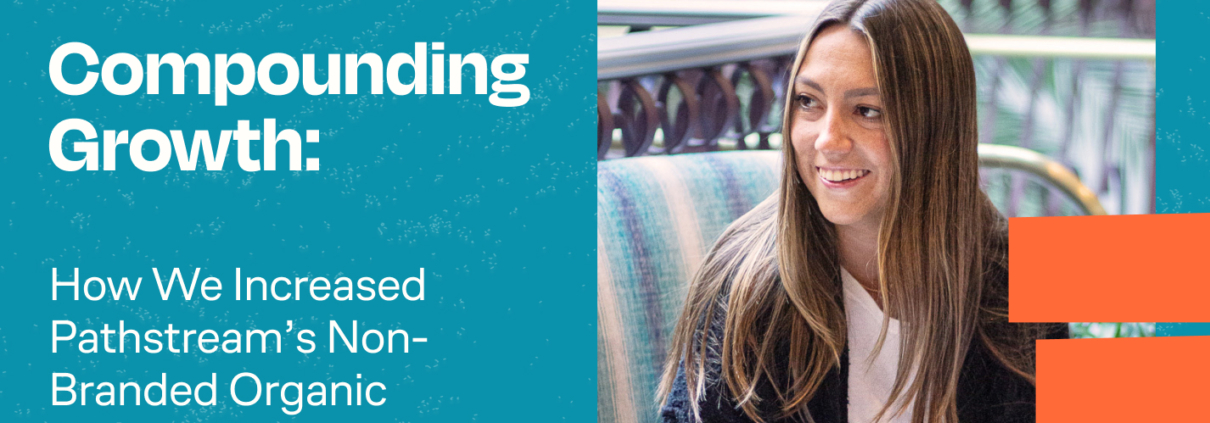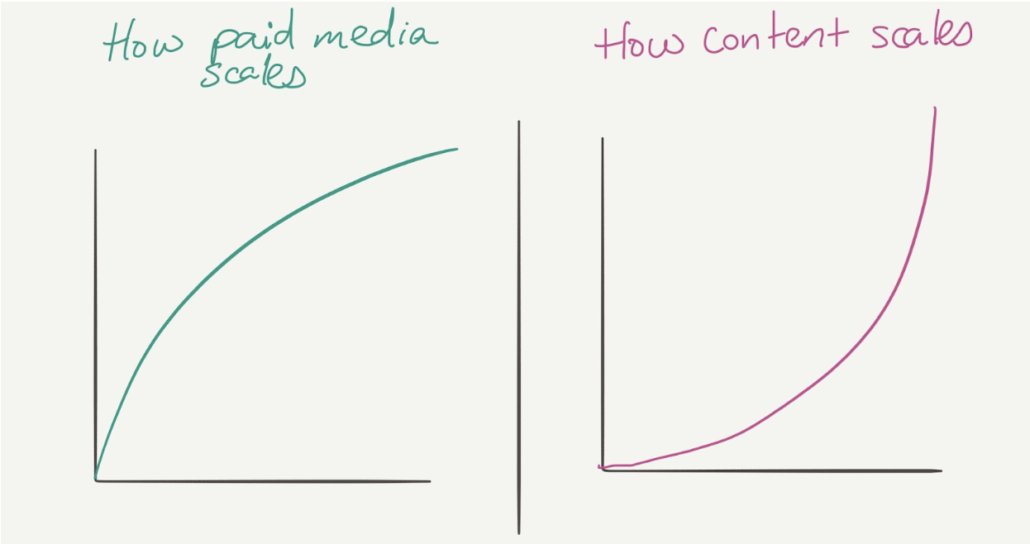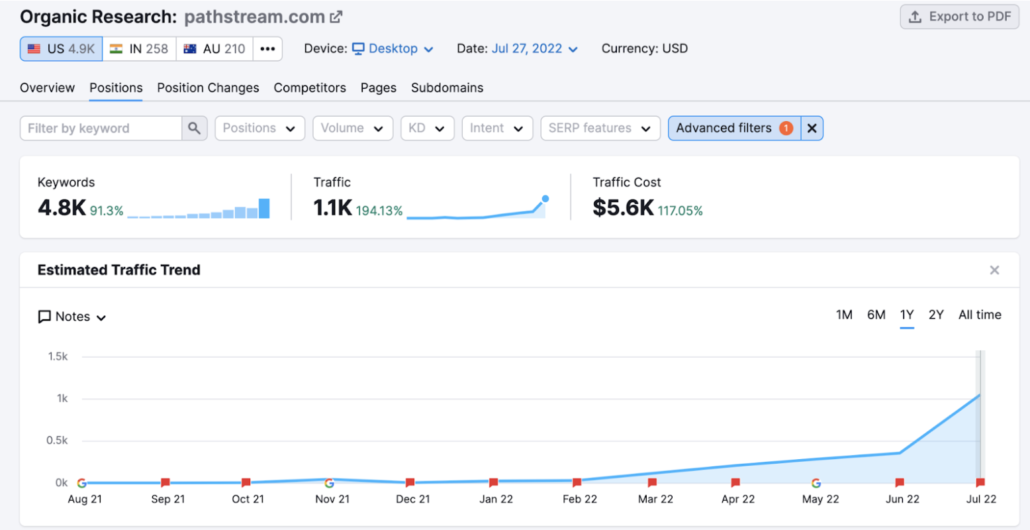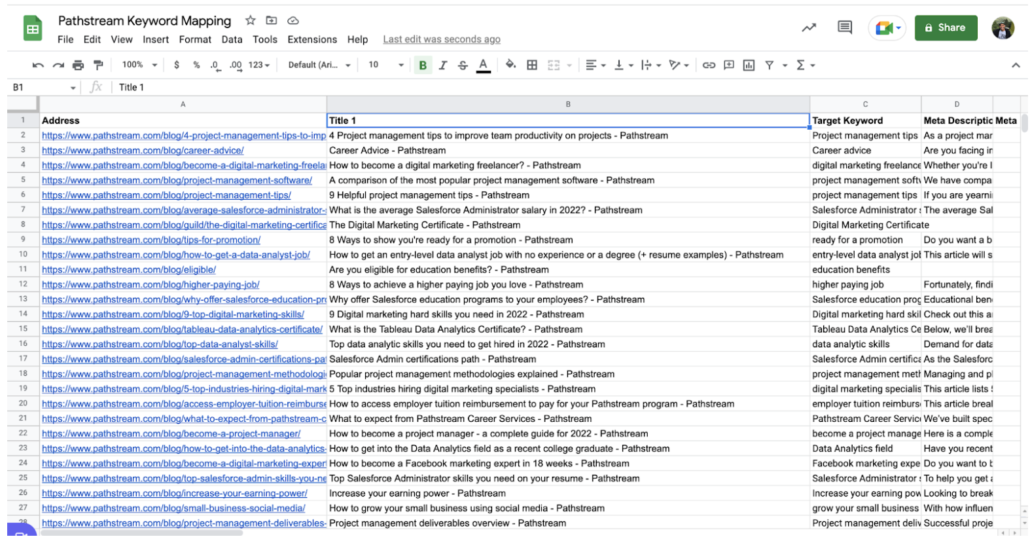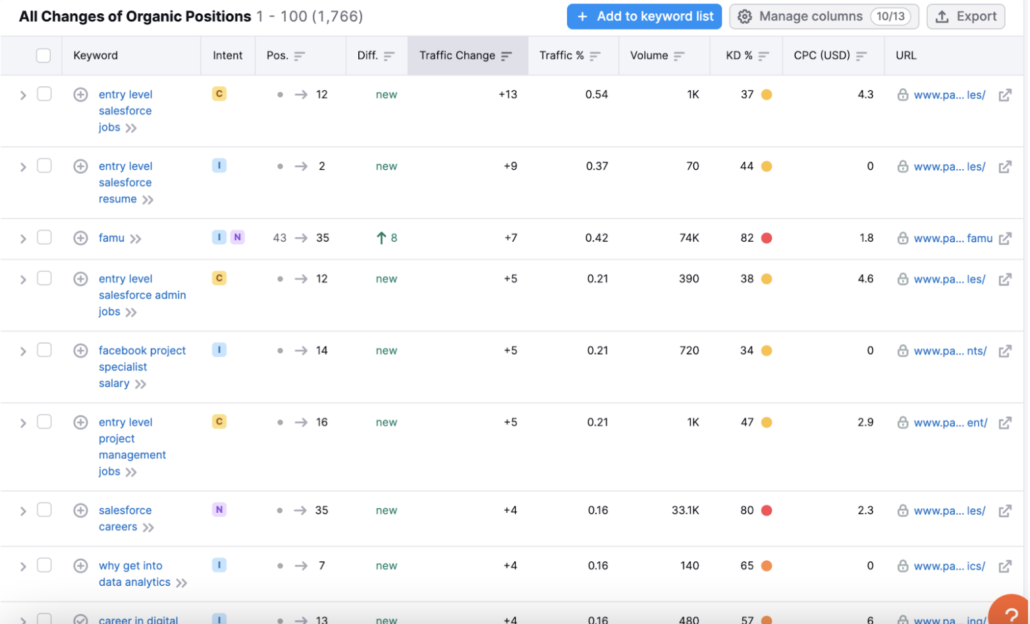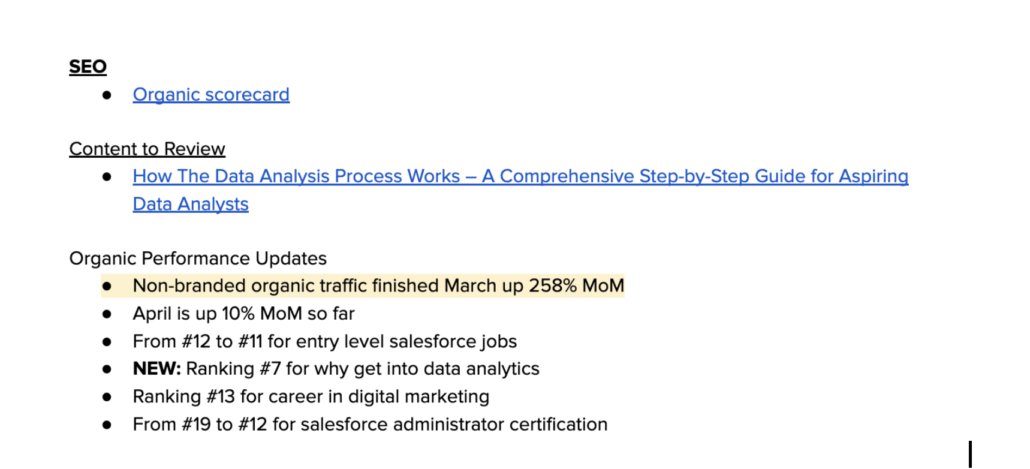Compounding Growth: How We Increased Pathstream’s Non-Branded Organic Clicks 486%
As a growth marketing agency, when we work with fast-growing startups like Pathstream, a VC-backed startup that offers certificate programs to help people advance their careers, we often hit the ground running on paid acquisition strategies to hit short-term growth goals.
But for long-term success, it’s important to invest equally in long-term wins like content. For Pathstream, our team focused on optimizing their existing site and creating new SEO content to improve their position in non-branded search results.
Here’s the story of how we increased non-branded organic traffic to account for ~23% of all organic traffic, up from less than 1%, driving a 486% YTD increase in weekly non-branded organic clicks, and helped to drive down Pathstream’s overall CAC.
SEO & Non-Branded Traffic
When we first created the SEO strategy for Pathstream, they had no blog on their website, just a Medium blog, and nearly 99% of all organic traffic was coming from branded search terms. There was so much opportunity to improve their site, and we started with the basics – a technical SEO audit, migrating the blog to their root domain, optimizing existing content, and creating new content based on a strategic list of focus keywords.
Technical SEO
We started by analyzing and optimizing the technical SEO aspects of Pathstream’s website to make sure we were in a good place before we began with the rest of our strategy.
Pathstream’s core website pages run on a JavaScript application which was causing issues when crawlers tried to scrape the metadata. The metadata wasn’t loading asynchronously, so when the crawlers attempted to scrape the content, it was all empty.
Of course this was a problem because Pathstream’s pages weren’t being indexed in SERPs with the correct SEO titles and meta descriptions that were present in the source code.
We worked with Pathstream’s developers to get the metadata to load asynchronously so that these pages could start ranking in SERPs for their target keywords. This was a fairly quick win with a huge potential impact.
Migration
The next step was to get more value out of the original content that Pathstream was creating on their offsite Medium blog. This meant not just migrating it, but migrating it to Pathstream’s main domain as a subdirectory rather than a subdomain.
This involved installing a new WordPress instance on a subdirectory of Pathstream’s domain, migrating the content, and internally linking it throughout the website.
This was a team project that involved our CRO and UX team creating beautiful mockups for the blog homepage and blog category pages.
Keyword Research
Once we had a solid technical SEO foundation, we narrowed in on our competitive analysis and keyword research.
The most crucial part of keyword research is nailing down your 5-10 focus keywords that you’ll build pillar page content for. Once we got those keywords we were able to build out a list of semantically-related secondary and tertiary keywords to build our high-quality content strategy around.
Keyword Mapping and On-Page Optimization
This keyword research equipped us with enough ammo for the next few months of content creation.
But before we start creating new content, we want to make sure we’re getting the most value out of the existing content.
We do this through keyword mapping. ScreamingFrog is a great tool for keyword mapping, it extracts the URL, SEO title, and meta description of each page on your website. Your job is determine the target keyword of each page based on that information and then decide if you need a new target keyword or not.
We take a look at all of the existing pages on the website and we map them back to a target keyword.
This helps us find pages that aren’t optimized for any specific target keyword, pages that are targeting the wrong keywords, pages that should be no-indexed, and more.
We then cross-reference that list of keywords with our keyword research to determine if it’s a keyword that we want to target and what it’s going to take to rank on page one for that keyword.
Will we have to create additional content and is this the best page that we should be attempting to rank with?
Content Creation
Once our foundational technical SEO and on-page SEO was complete, we launched our content creation machine.
We utilized our optimized landing pages as our pillar pages and created supporting blog content to build out the cluster strategy. This allowed us to build comprehensive content throughout the whole website with landing pages, blog posts, and additional types of content.
We also tapped our UX and Creative team to include original images in all of our blog posts, which helped increase the average time on page.
Keyword Movement
We primarily use SEMrush, Google Search Console, and Google Analytics to track non-branded keyword movement.
We analyzed Pathstream’s top pages and non-branded keywords at the beginning of our partnership and continuously monitored them week over week and month over month.
After just a few weeks, we started getting great results from our strategy and seeing significant positive keyword movement for our target keywords.
Organic Traffic – Weekly Organic Scorecard
We saw significant increases in non-branded organic clicks to Pathstream’s website in our weekly and monthly organic scorecard. We just recently had our two highest back-to-back weeks of non-branded organic clicks ever, according to Google Search Console, with 722 and we’re on pace to beat it next week.
According to Google Search Console, we’ve seen non-branded organic clicks increase YTD by 1,180% with an increase in average CTR and average position. According to SEMrush, we saw a 258% MoM increase from February to March, alone and at the time of this writing, July 2022, we’ve seen another 194% MoM increase in non-branded organic traffic, and we’re not slowing down.
Interested in learning how Tuff can help skyrocket your organic search traffic? Hit us up!

Derek is a digital marketer based in Boston, Massachusetts with almost a decade of hands-on SEO experience. He finds it meaningful, challenging, and exciting to develop, test, and implement new SEO strategies. When he’s not auditing websites and optimizing content he’s usually backpacking and exploring new cultures.
